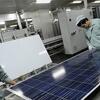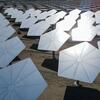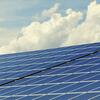Energy Systems
. 2021. “Production of hydrogen from offshore wind in China and cost-competitive supply to Japan.” Nature Communications, 12, 6953. Publisher's VersionAbstract
. 2021. “Pathway toward carbon-neutral electrical systems in China by mid-century with negative CO2 abatement costs informed by high-resolution modeling.” Joule, 5, 10 (20 October), Pp. 2715-2741. Publisher's VersionAbstract
. 2024. “End-year China wind power installation rush reduces electric system reliability.” Energy Economics, 133, May 2024, Pp. 107507. Publisher's VersionAbstract
2024
Jul
25
New HCP Publications
. 2022. “Projected global demand for air conditioning associated with extreme heat and implications for electricity grids in poorer countries.” Energy and Buildings, 268, August, Pp. 112198. Publisher's VersionAbstract
. 2022. “Cost increase in the electricity supply to achieve carbon neutrality in China.” Nature Communications, 13, 3172. Publisher's VersionAbstract









